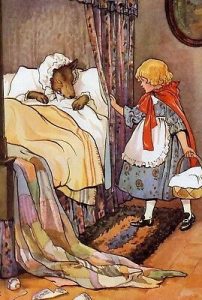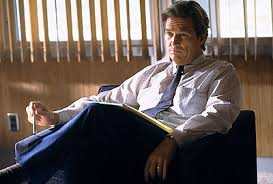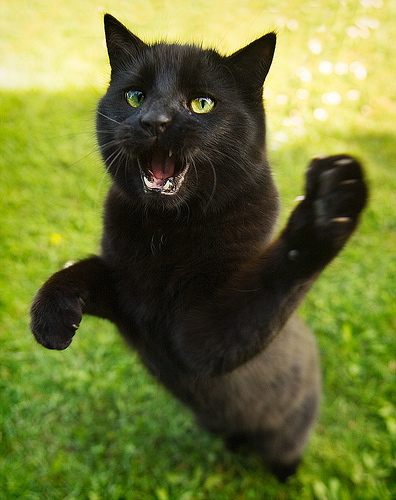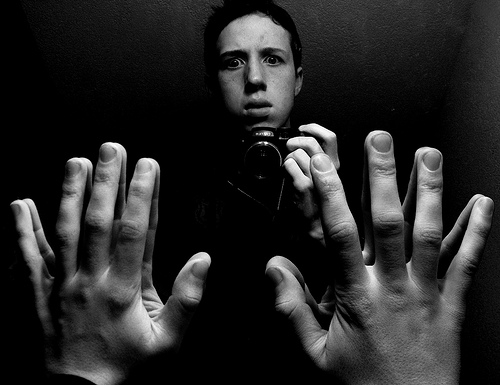Conflict in Story: Character versus Self
This post is a reprint from a few years ago, shared again to help you nail the opposition in your story.
Traditionally, there are four general types of opposition at the heart of a story. While our protagonist might face multiple kinds of opposition, the primary one will usually fall into man vs. man, man vs. nature, man vs. society, or man vs. self (and of course you can replace man with woman, or robot, or alien).
In story structure, there are key scenes in which the opposition rears its/his/her ugly head and “pinches” the protagonist—hence why these are called “pinch points.”
Two specific pinch points occur in traditional story structure, the first one falling between the 25% mark (turning point #2) and the midpoint (turning point #3) and the second one around the 67% mark (before the Dark Night of the Soul moment).
The purpose of the first pinch point is generally to introduce the opposition to the reader. The second pinch point reveals the full force of the opposition.
 For example: in the fairy tale of Little Red Riding Hood, we meet the wolf for the first time in the forest, as Red is on her way to her grandmother’s with a basket of goodies. He doesn’t attack Red, but we see the danger he represents. In the second pinch point, before the climax, the wolf has eaten Grandma and is in bed wearing her nightie and bonnet, now posing a much greater threat to Red. (“My, what big teeth you have, Grandma …”)
For example: in the fairy tale of Little Red Riding Hood, we meet the wolf for the first time in the forest, as Red is on her way to her grandmother’s with a basket of goodies. He doesn’t attack Red, but we see the danger he represents. In the second pinch point, before the climax, the wolf has eaten Grandma and is in bed wearing her nightie and bonnet, now posing a much greater threat to Red. (“My, what big teeth you have, Grandma …”)
You’ll find this basic structure in many, if not most, traditional stories, fairy tales, novels, plays, and movies. That’s because story structure is ingrained in us, and, because of that, readers expect it.
So that behooves writers to learn and master story structure!
When Your Character Is His Own Worst Enemy
In the movie K-PAX (one of my favorites, which you may know, since I often refer to it!), Dr. Mark Powell, head of psychiatry at a prestigious New York mental hospital, scoffs when he meets his new patient, Prot, who claims to come from a planet called K-PAX (wouldn’t we all?).
His goal for this story is to help Prot realize he’s batty and needs serious therapy. But, at every juncture, his attempts backfire, for Prot knows and does things that seem impossible for a human. Yet, Powell cannot risk considering that Prot might be telling the truth. He becomes obsessed in his mission to disprove Prot’s claim.
This poses an interesting question: Who or what is the opposition in a story like this? We have Dr. Powell, a man who is a skeptic, out to prove that Prot is delusional and perhaps even suicidal. There is no “enemy” or antagonist trying to stop Powell from learning the truth about Prot. Or is there?
If we stop and consider those basic conflicts in storytelling: man vs. nature, man vs. society, man vs. man, and man vs. self, we only need to ask the simple question: Who is Powell’s worst enemy? Who is standing in the way of him reaching his goal: finding out the truth about Prot?
Stories with Catalysts
Powell believes his goal is to save Prot’s life, but he is full of dogmatic views that prevent him from accomplishing his goal.
No, Prot isn’t the protagonist. Prot is the catalyst. A catalyst for Powell’s inner transformation. Prot, like Mary Poppins, who is “practically perfect in every way,” plays a different type of role in this story. One that is more a magi archetype, subtly guiding Powell on his deep emotional journey—without Powell’s knowledge or consent.
 With that in mind, we see Powell as his worst enemy.
With that in mind, we see Powell as his worst enemy.
So what happens at the pinch points? Moments in which his deep-seated beliefs are blasted out of the water, forcing Powell to face the facts and question those beliefs. This is man vs. self.
What Prot does day by day greatly annoys Powell, challenges his competency, his compassion, his claim of expertise, his wisdom (of which Powell is very proud), for with each step Prot takes to reveal Powell’s flaws to himself, Powell resists.
But, in the end, the truth not only shatters all his conceptions of truth, it also shatters his persona, making him painfully aware of his avoidance of looking at himself honestly and humbly. Prot succeeds, via his time with Powell, in helping him fully move from persona to essence.
Think of the pinch point (or the protagonist’s reaction to the pinch point) as an opportunity to reveal a potentially fatal flaw in your hero. This is perfectly exemplified in the example just discussed. Powell’s fatal flaw is his pride. His belief that he knows everything and is right about everything because he’s smart and educated and holds a prestigious position. But his pride stands in his way from reaching his goal.
He is his own worst enemy, and he must vanquish that enemy in order to come fully into his essence.
Powell’s experience with Prot creates transformation. In the end, Powell faces his faults, see himself as he truly is, and knows the way forward to happiness and peace, which had eluded him because of his flawed persona.
Sometimes, characters think others are the enemy. Others are trying to prevent them from finding happiness or reaching some goal. They blame people, places, weather, and other things. But at the heart of the story, they are the opposition and the enemy that must be faced and dealt with.
Are you writing a “man vs. self” story? Just as with any story, there must be key moments in which your character has to face that enemy and feel the force of his own opposition. And, at some point, he has to find a way to beat that enemy, thus creating the potential for some great inner conflict!
And, never forget: conflict is story.
Want to learn more?
 Take my online course The 10 Key Scenes That Frame Up Your Novel. Your pinch points are important scenes in your novel, and this is clearly explained in the course (you have lifetime access to these videos, and the handouts will help you immensely to craft a masterful plot and character arc for your protagonist!).
Take my online course The 10 Key Scenes That Frame Up Your Novel. Your pinch points are important scenes in your novel, and this is clearly explained in the course (you have lifetime access to these videos, and the handouts will help you immensely to craft a masterful plot and character arc for your protagonist!).
Here are a few comments from writers who’ve taken this course:
“C. S. Lakin is a genius! I love how she merges mind-blowing structure information into comprehendible audio/visual lessons. I’m one who needs to have complicated concepts explained simply. Thank you, Susanne!” – Phyllis Still
“This is so so helpful in helping me think through the structure of my novel – both the inner and outer journeys of the characters. I love the exercises. They help so much. Thank you!!!” Sarah Johnson
“Thanks for sharing your knowledge and giving a more precise explanation of how to construct a story with balance.” – Linda Kasten
“Terrific course full of valuable insights and techniques to build the novel scene by scene. The addition of the transformational journey added the extra dimension showing the linkage of how a character reactions to the is based on their internal beliefs. Success or failure depends on dealing with the internal struggles of those lies and beliefs. This course really helped illuminate it for me. Great class.” – Larry Keeton
“Absolutely great information. Thank you. I see lots of movies. I take the ten key scenes with me and plot them out. My plan is to go back to stories I’ve written and left and finally finish them.” – R. Michael Parker
“A great course! So many questions answered… my first draft is well down the path to a completed manuscript! I can’t thank you enough, Susanne!” – AJ
Featured photo by Uday Mittal on Unsplash











